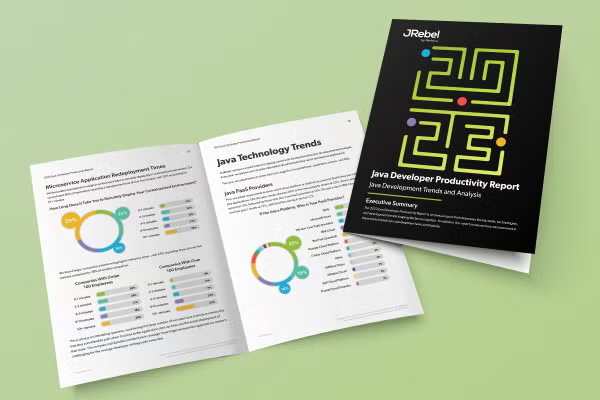Here at JRebel, we’ve been conducting annual surveys of Java developers to gain insight into the top tools, technologies, and trends shaping developer productivity and the overall Java ecosystem. Now in its 11th year, we’re excited to have released the 2023 Java Developer Productivity Report!
In this post, we provide key highlights of the report — from the impact of microservice redeploy times to the biggest challenges impacting developers. We also briefly touch on our expert analyses of these findings to help give you a greater understanding of what’s impacting the Java community today.
Back to topThe 2025 Java Developer Productivity Report Is Here!
Get the latest data points on the tools and technologies your Java development peers are facing in the 2025 Java Developer Productivity Report.
About the 2023 Java Developer Productivity Report
The 2023 Java Developer Productivity Report is based on a survey of Java development professionals around the world. This year’s survey ran from November 2022–January 2023 and drew in a total of 411 responses. It focused primarily on the Java technologies, tools, and methods used in developing Java applications today. We also asked questions specific to microservice frameworks, performance issues, and developer productivity obstacles, as well as respondent demographics and organization firmographics.
The 2025 Java Developer Productivity Report is here! Discover the newest trends in Java development.
Respondent Demographics
Like previous years, the respondents were primarily developers or similar, representing 45% of the overall respondent data. When combined with the second most popular job title among respondents, java architect, that number increased to 66% of all respondents. There were also a fair number of leadership roles represented, with team leads and directors representing 19% and 8%, respectively.
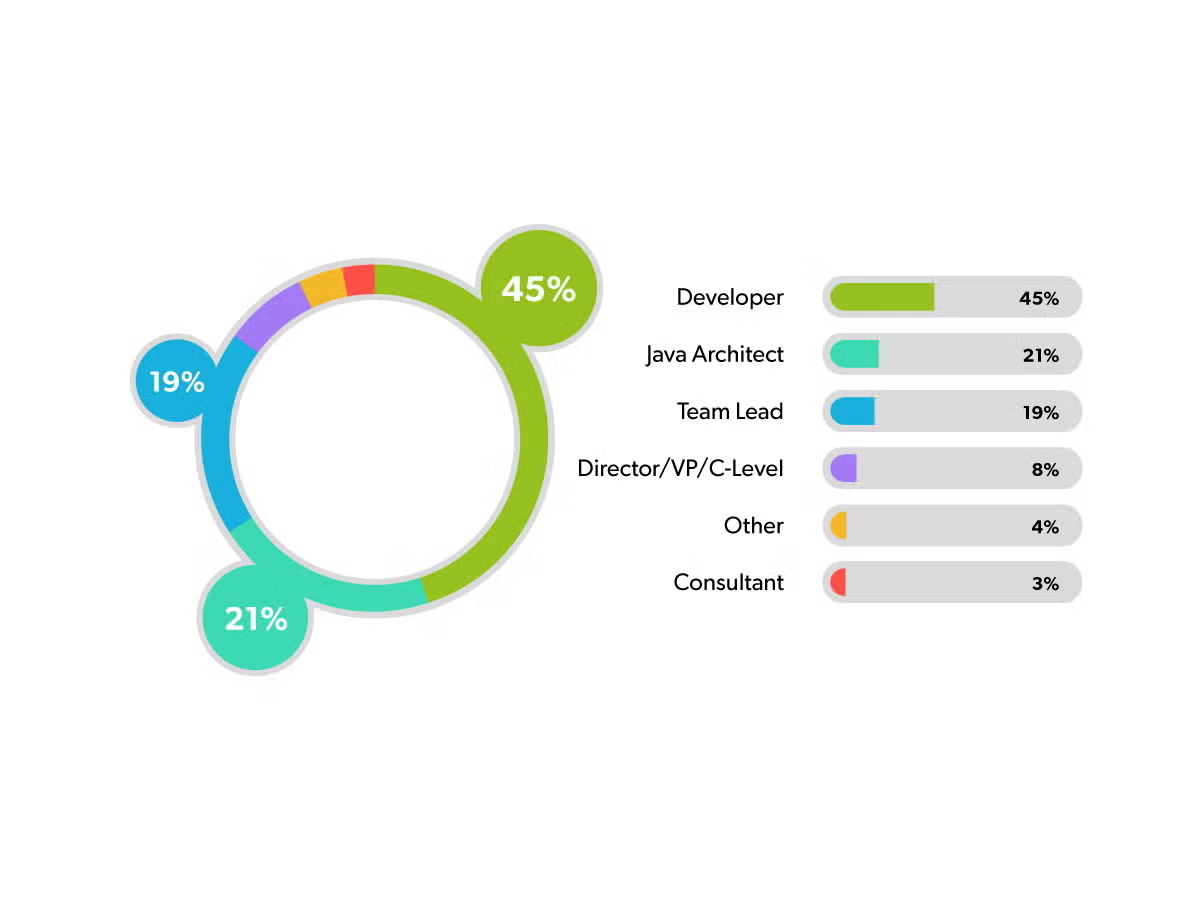
A majority of this year’s respondents came from large, enterprise companies, with 45% reporting a company size of over 1000 employees. Mid-size companies with 100–1000 employees were the next highest group at 22%. Small companies with 20–100 employees represented 13% of respondents, followed by startups (1–20 employees) and contractors each at 10%.
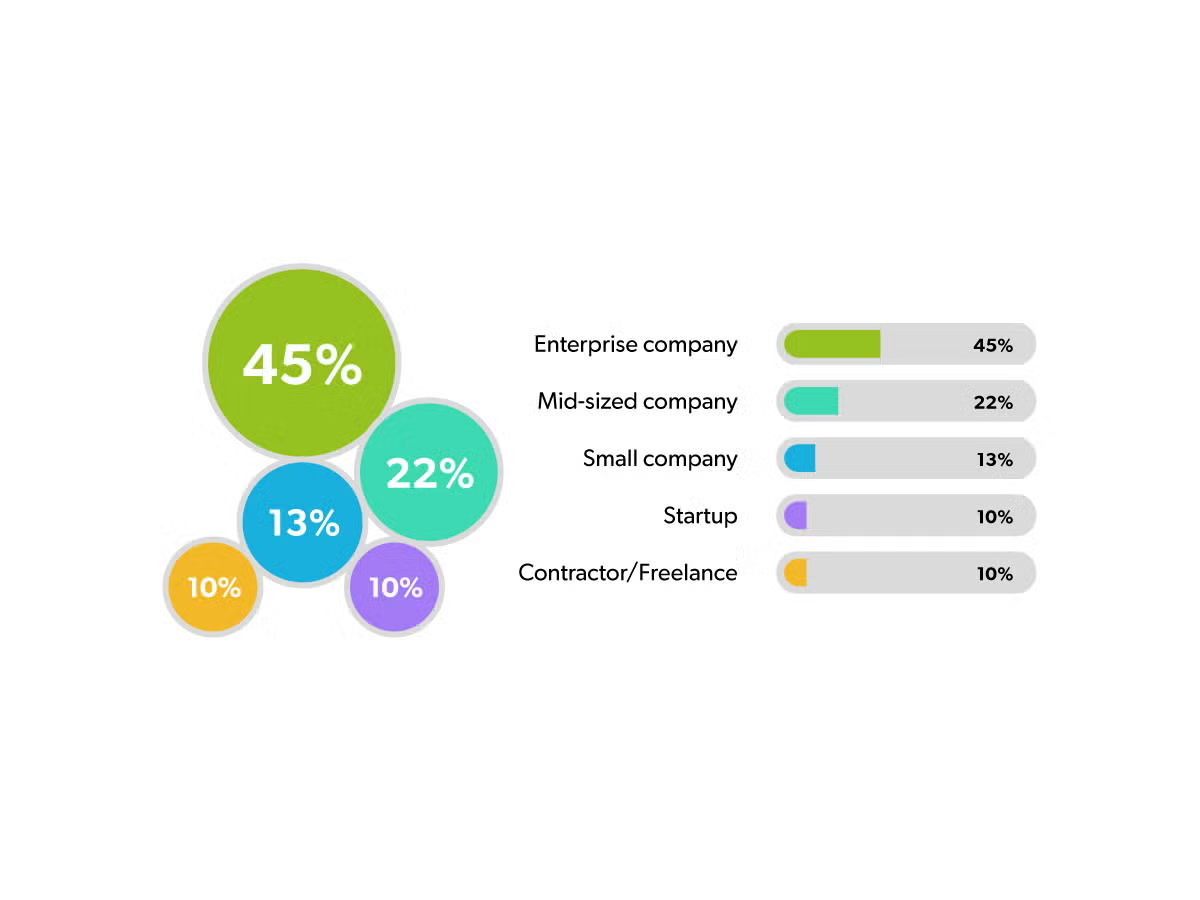
Want to skip the summary and get all the details now?
Download the report >>
What We Asked in the 2023 Survey
In the 11 years JRebel has been running the Java Developer Productivity Survey, the primary focus has been on developers. From the Java productivity tools they use and the architectures they implement, to the challenges they encounter when developing Java, the survey is designed to get to the core of the Java development experience.
For this year’s survey, we again explored that experience by asking questions about the following:
- Java language and development trends
- Java application architecture trends
- Microservices trends
- Java technology trends
- Developer productivity trends
- And more!
Developer Productivity Trends
One of our favorite parts of our survey each year is asking about redeploy times. If you aren’t familiar with JRebel, we ask about this because JRebel is one of the top Java productivity tools that helps developers completely bypass the redeployment process during Java development. Pretty convenient, huh?
Java Application Redeploy Times
We asked respondents to share the average redeploy time for their Java application. Whereas last year’s results showed redeployment times between 2–3 minutes as the most common, 10+ minutes was the most common for this year — coming in at 27% in 2023 vs. 21% in 2022. Teams who experienced under four minutes per redeploy represented 42% of all responses, while those who marked over three minutes accounted for 59%.
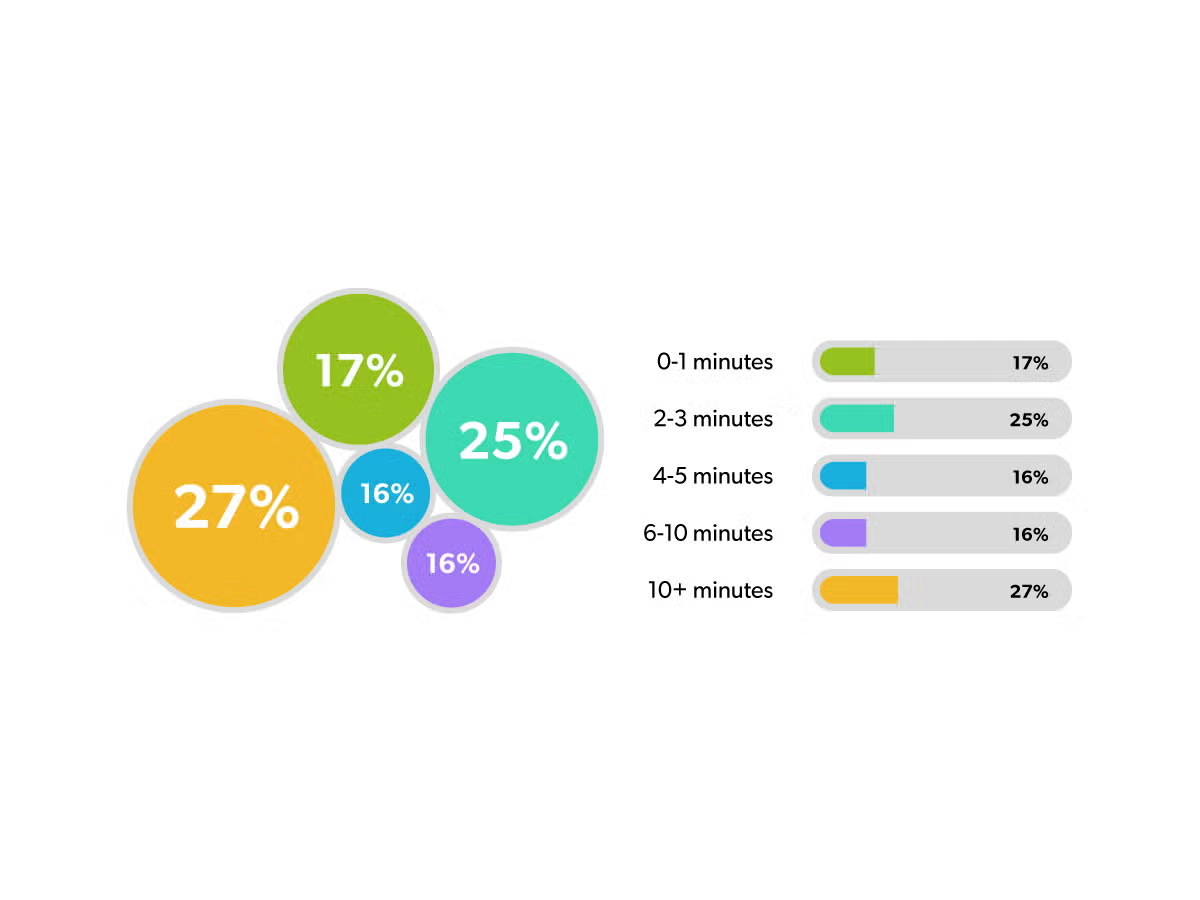
It’s clear that Java developers continue to see large redeploy times throughout their applications. While we expect this pattern to continue, we believe that Java productivity tools like JRebel will help address these pain points to improve the Java developer efficiency.
Java Developer Obstacles
Most, if not all, Java developers will tell you that they deal with an array of issues that get in the way of efficiently performing their tasks. So, we wanted to dive into this and learn what the biggest hindrances are.
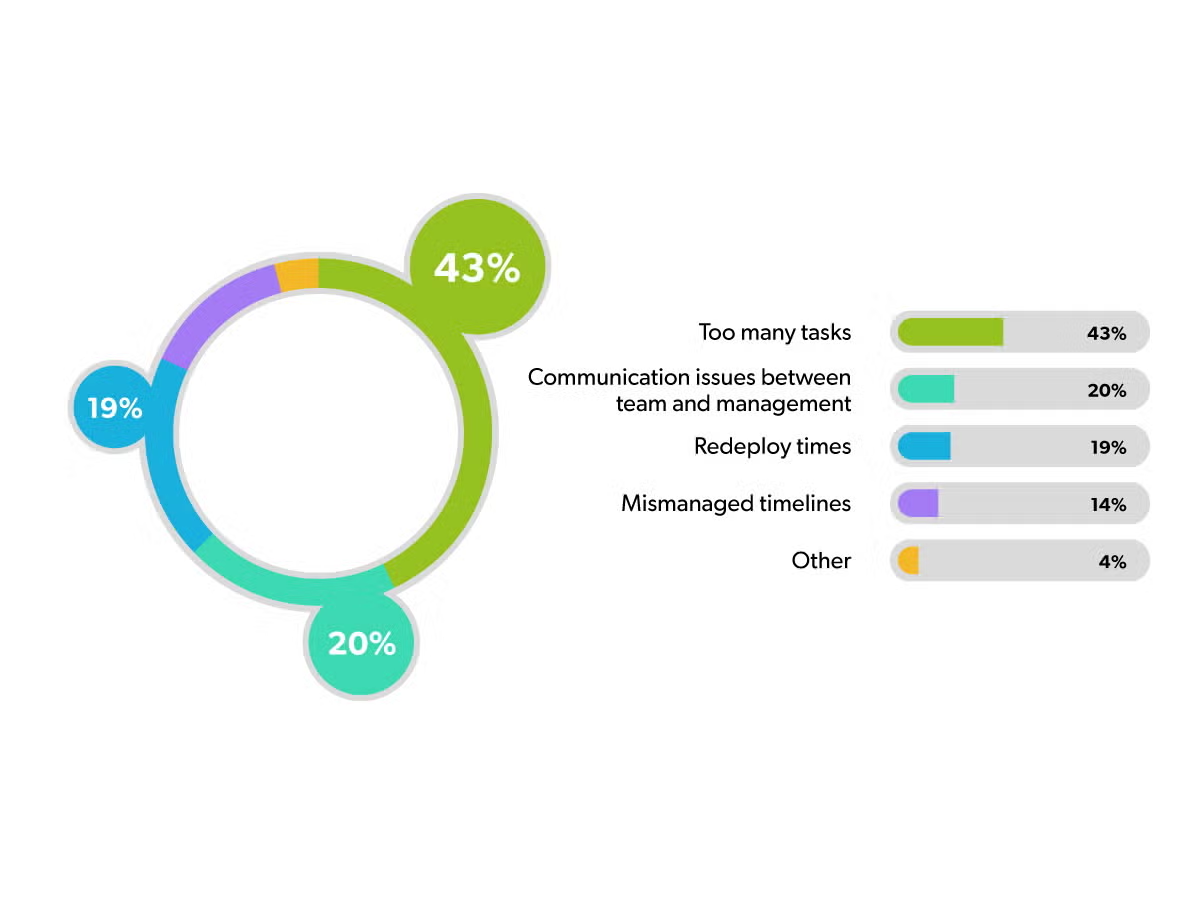
As you can see, Java developers feel that there are too many tasks put on their plate — which appears to be the biggest component impacting their productivity. This is very telling for team leads, too, on what’s directly affecting the overall coding experience.
Back to topMicroservices Trends
Every year, we ask respondents to share the architecture of the primary application they develop. For those who reported using microservices, we then asked a series of questions related to their status in adopting microservices — including the number of microservices that make up their microservice-based application, as well as application redeploy times.
Microservices Per Application
Like last year, Spring Boot remained the top microservice application framework at 59%. Quarkus, Micronaut, DropWizard, and Vert.x rounded out the bottom four at 8%, 6%, 2%, and 1%, respectively.
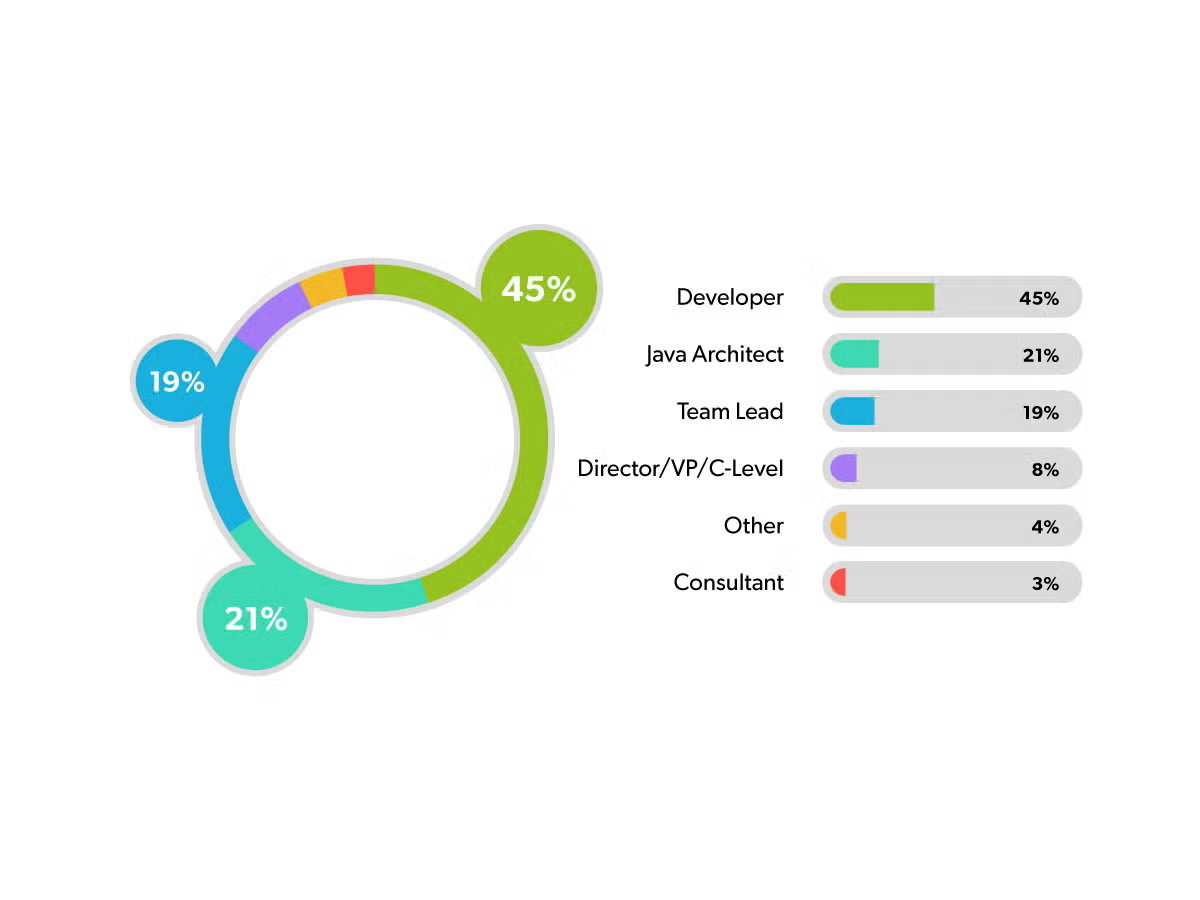
This showed us that the size of the company considerably impacts the number of microservice applications used. It makes sense that the larger the company, the larger the amount of microservices utilized. Why? Microservices have been around for a while, which appears to have enabled larger companies to utilize an extensive number of microservices in their applications.
Microservice Redeploy Times
Respondents were asked to weigh in on the time it takes to remotely deploy their containerized environment. Results indicated that 46% of respondents reported a redeployment time of over five minutes, while 29% accounted for 10+ minutes.
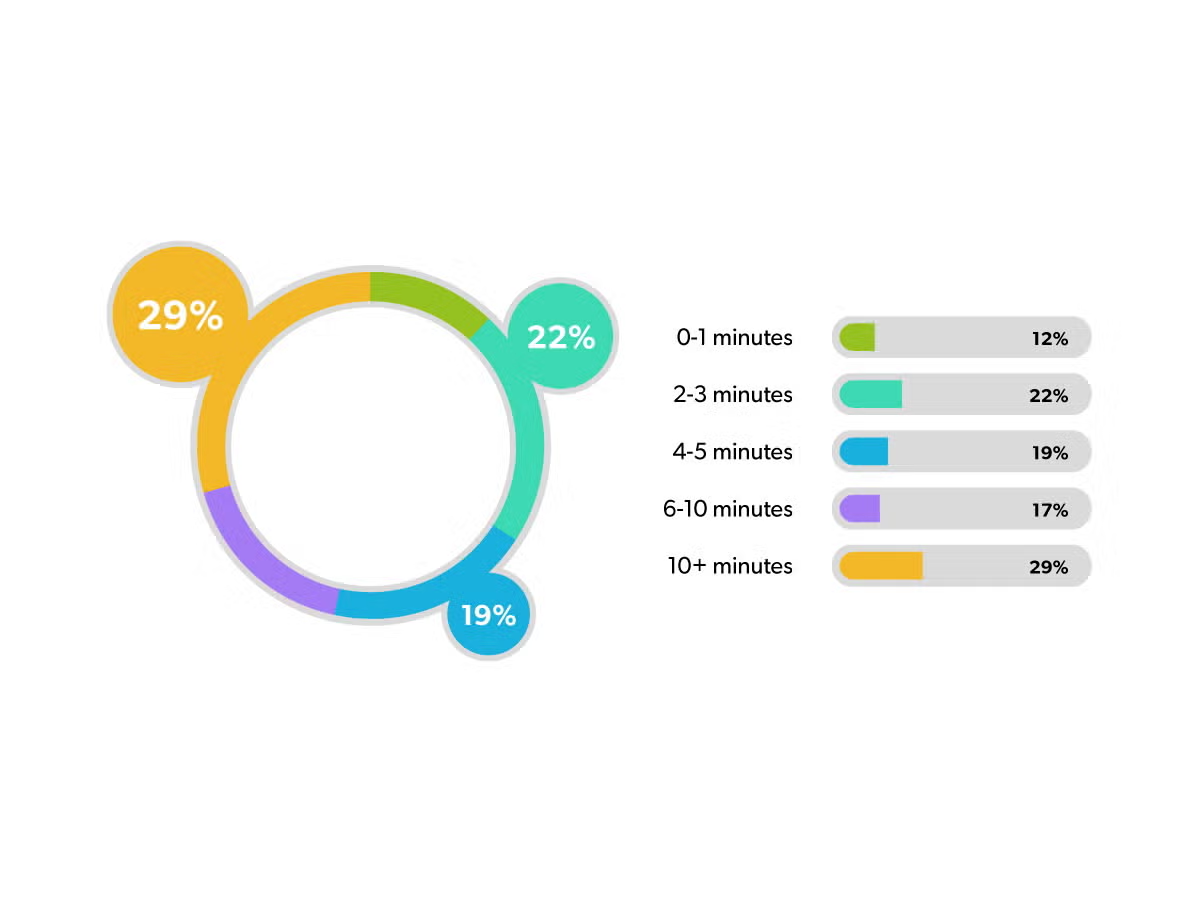
It’s important here to consider the large number of microservices in the Java community that face considerable pain when it comes to the code’s application deployment. The complex and detailed architecture to manage these large microservice applications makes it laborious for the average developer writing code every day. That's why the implementation of Java productivity tools like JRebel is so essential!
Back to topFinal Thoughts
In the 11 years that JRebel has conducted the Java Developer Productivity survey and its corresponding report, we’ve discovered a constant influx of new innovations, trends, and technologies. But with that constant march of innovation comes new and familiar challenges.
Redeploys continue to be a major challenge for developers in their day-to-day work. Eliminating those redeploys will remain a key area of focus we hope to meet the need of in 2023 and beyond. With the Java community continuing to grow, we look forward to monitoring these results — and more.
Back to topDownload the Report
The full 2023 Java Developer Productivity report features in-depth data and analyses on the most popular tools, trends, and technologies in the Java ecosystem today. Download your free copy today.
